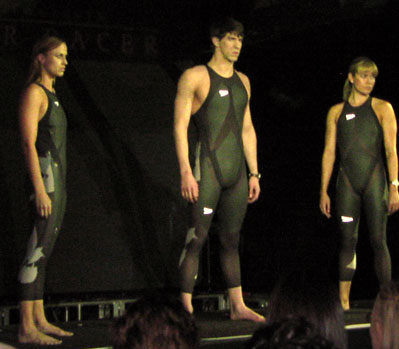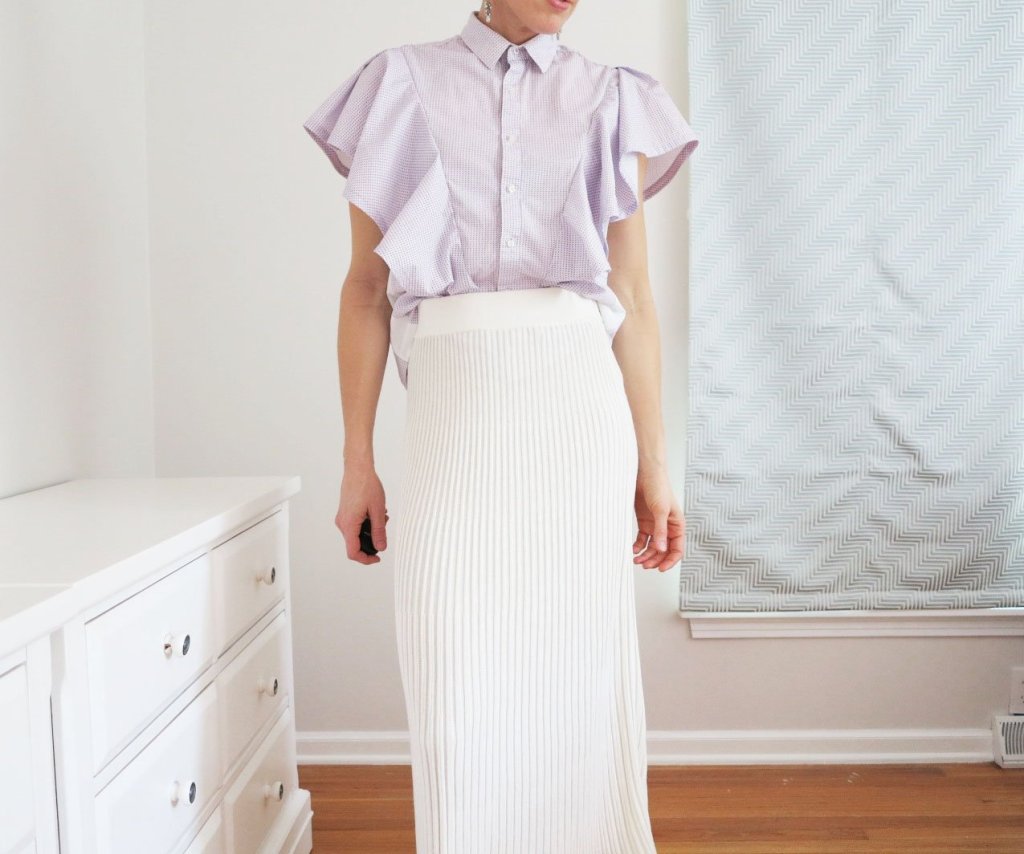Not all bathers are meant for swimming. And by swimming, I mean actual laps, freestyle at a pace, butterfly, and flip turns. I have no tolerance for togs that bag out, grab air bubbles, or shift over my bust as I swim. I’ve always stuck to Speedos for my training, racing, and now lap-swimming togs, fiercely loyal in fact. But there could be an extra challenger soon. Me.

I loved my Splash swimsuits, but they weren’t designed for lap swimming. Even so, they worked really well when worn with a rashie over the top half (halter necks just won’t do for real swimming!). This Summer, I’ve been wearing my tiger one-piece mostly. I’ve been playing with the kids, hanging at the pool, and swimming lots of casual laps in it. The fabric has held up beautifully. The design worked well enough, but doing so much swimming also gave me lots of time to analyse the features that needed to be changed.
It was a smidgen too short through the body. The cross back was positioned too high which meant I could feel it across my shoulder blades as I rotated my arms. Also, whilst I loved the novelty of low cut, full bottom bathers last season, I just wasn’t feeling this trend any more. A higher cut leg was calling, not just for the look, but also for functionality and range of movement. Either that, or a to-the-knee bike short style, but I wasn’t going there.
In fact, all this pondering about swimsuits got me thinking about the evolution of competitive swimsuits and the use of technical fabrics (and non-textiles). I ushered swimming out of my life around 1996. Around that time, we raced in ultra small, skin-tight suits, and occasionally what we called ‘paper suits’. The ‘paper’ lycra was developed in 1988 for the Seoul Olympics and the Australian swim team swam in them at Barcelona. This swimsuit fabric was different to normal lycra. It was extremely thin and felt very crisp and dry to the hand. Even the dark colours were semi-transparent in the light. The fabric was strong, extremely lightweight and we wore them skin-tight and a few sizes too small. They only really lasted for one competition. I was fortunate enough to swim under the guidance of a national coach, who bought back souvenirs that he swapped at international meets. That’s how I got my hands on a paper suit, and the ribbed swimwear I’ll talk about later. By the time I swam at an international meet, in about 1995, the swimsuits were back to being regular lycra and ultra small (for a brief window anyway).
More technical, ribbed fabrics started coming in just as I was signing off, but these were still a woven textile. I had an Aquablade catsuit that was really just a high-necked swimsuit. The fabric was designed in a striped print, created by the addition of water-repellent resin. It was supposed to increase the speed of water flow over the suit. The picture below is the best I could find (from the Powerhouse Museum of Sydney, Swimsuit collection). I might still have my suit hiding somewhere in a box in Australia.

The history that follows this is even more fascinating. In 2000, Speedo introduced the Fastskin suit that was said to mimic sharkskin, with ridges and bumps to channel water around the body. They covered most of the body, wrist to neck to ankle. These suits were approved for the 2000 Olympics and 83% of the medals were won wearing them.

In 2008, Speed then launched the LZR racer swimsuit, which they developed in conjunction with NASA, the Australian Institute of Sport, and an Italian company, Mectex. The patented technology for these suits apparently increases blood flow to the muscles, compresses certain parts of the body, and holds the body in a more hydrodynamic position in the water. Suits were also designed specifically to match the stroke being swum and the different pattern of movement/muscle use in that stroke. The “fabric” consisted of woven elastane-nylon and 50% polyurethane. The seams are ultrasonically welded together, rather than stitched! Other companies followed suit with similar technology, making their suits out of up to 100% polyurethane.

LZR racer by Speedo 2008
Prior to the Beijing Olympics, FINA endorsed these suits. At Beijing, 23 of 25 world records were smashed, and 94% of races were won wearing them. It was suggested that these suits resulted in times being swum 2-4% faster, which is hugely significant in a fixed environment like a swimming pool. By 2009, 130 world records had been broken by swimmers wearing these non-textile suits. FINA backflipped and the suits are now banned. Yet, those records still stand.
Current policy states that swimsuit fabric must be a textile, which is defined as any open-mesh material like cotton, nylon, lycra, etc. So, no more polyurethane with welded seams! There are also regulations on how much of the body a swimsuit can cover. A good example is what you may have seen all the swimmers wearing recently in Rio (ignore the two-piece!).

Meanwhile, back in the normal world, I’m just focusing on a very basic design, in a definitive textile of course. No chance of me being banned from any local pools any time soon! Even after all the modifications, my suit is still not perfect, but it is pretty close to meeting all my needs! The length is great. The cross back feels as though it is in a much better position but I’ll have to do some swimming to test that out properly. I love the bottom half of the bathers. The bottom coverage is perfect and I feel like I got the leg cut just right. I like the way the sides come forward a little more than a generic suit, and the back comes up a little higher. Next time, I’ll widen the bust area a smidgen. I might also have a go at lowering the back to a more traditional swimsuit height.












































































